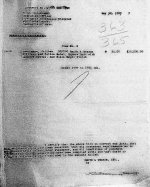austintexas
Member
bullets
I have in my collection a S & W 38 HE Target that was one of 1000 sent to England early in the war that the English ran a chamber reamer in 38 S&W in the cylinder charge holes to convert it to shoot 38/200. If they thought it was safe to do and shoot, I don't think you have a problem.
SWCA 892
PS, I shoot this revolver occasionally with no problems.
I have in my collection a S & W 38 HE Target that was one of 1000 sent to England early in the war that the English ran a chamber reamer in 38 S&W in the cylinder charge holes to convert it to shoot 38/200. If they thought it was safe to do and shoot, I don't think you have a problem.
SWCA 892
PS, I shoot this revolver occasionally with no problems.

